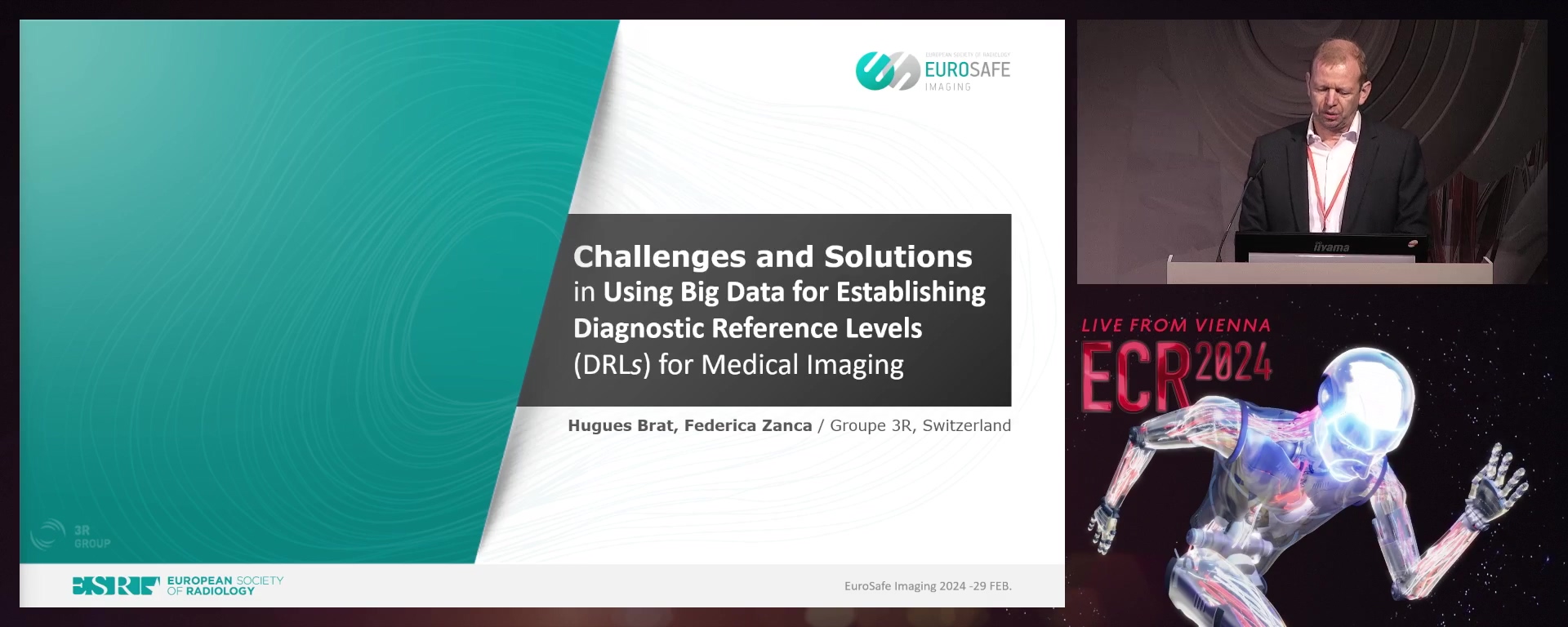EuroSafe Imaging Session
EU 11 - Computational tools for the establishment and use of diagnostic reference levels (DRLs)
4 min
Chairperson's introduction
John Damilakis, Iraklion / Greece
22 min
Artificial intelligence (AI) for the establishment of DRLs
John Damilakis, Iraklion / Greece
1. To understand why DRLs should be seen as a dynamic tool that follows the development of clinical practice and technology advances.
2. To appreciate the potential role of AI in establishing DRLs.
3. To learn how AI can assist in dose estimation and optimisation.
2. To appreciate the potential role of AI in establishing DRLs.
3. To learn how AI can assist in dose estimation and optimisation.
22 min
The role of dose management systems in the establishment and use of DRLs
Virginia Tsapaki, Vienna / Austria
1. To understand the importance of dose management systems (DMS) in establishing and using dose reference levels (DRLs) for radiation dose management in radiology practices.
2. To learn about the different types of DMS available and their respective advantages and limitations in implementing DRLs for different radiological procedures.
3. To gain insights into the best practices for integrating DMS with DRLs to optimise the quality of radiological examinations.
2. To learn about the different types of DMS available and their respective advantages and limitations in implementing DRLs for different radiological procedures.
3. To gain insights into the best practices for integrating DMS with DRLs to optimise the quality of radiological examinations.
22 min
Challenges and solutions in using big data in establishing DRLs for medical imaging
Hugues Brat, Sion / Switzerland
1. To understand the importance of big data in establishing DRLs for medical imaging.
2. To identify potential challenges associated with using big data for DRLs, including anonymisation, security, privacy, verification, data quality, data interoperability, bias, ethical considerations, and cost.
3. To learn about potential solutions to overcome these challenges, such as automated quality control tools, data validation processes, peer review, collaboration, data sharing, and random sampling.
2. To identify potential challenges associated with using big data for DRLs, including anonymisation, security, privacy, verification, data quality, data interoperability, bias, ethical considerations, and cost.
3. To learn about potential solutions to overcome these challenges, such as automated quality control tools, data validation processes, peer review, collaboration, data sharing, and random sampling.
20 min
Panel discussion: Is the use of computational tools important for the implementation of DRLs in clinical practice?




